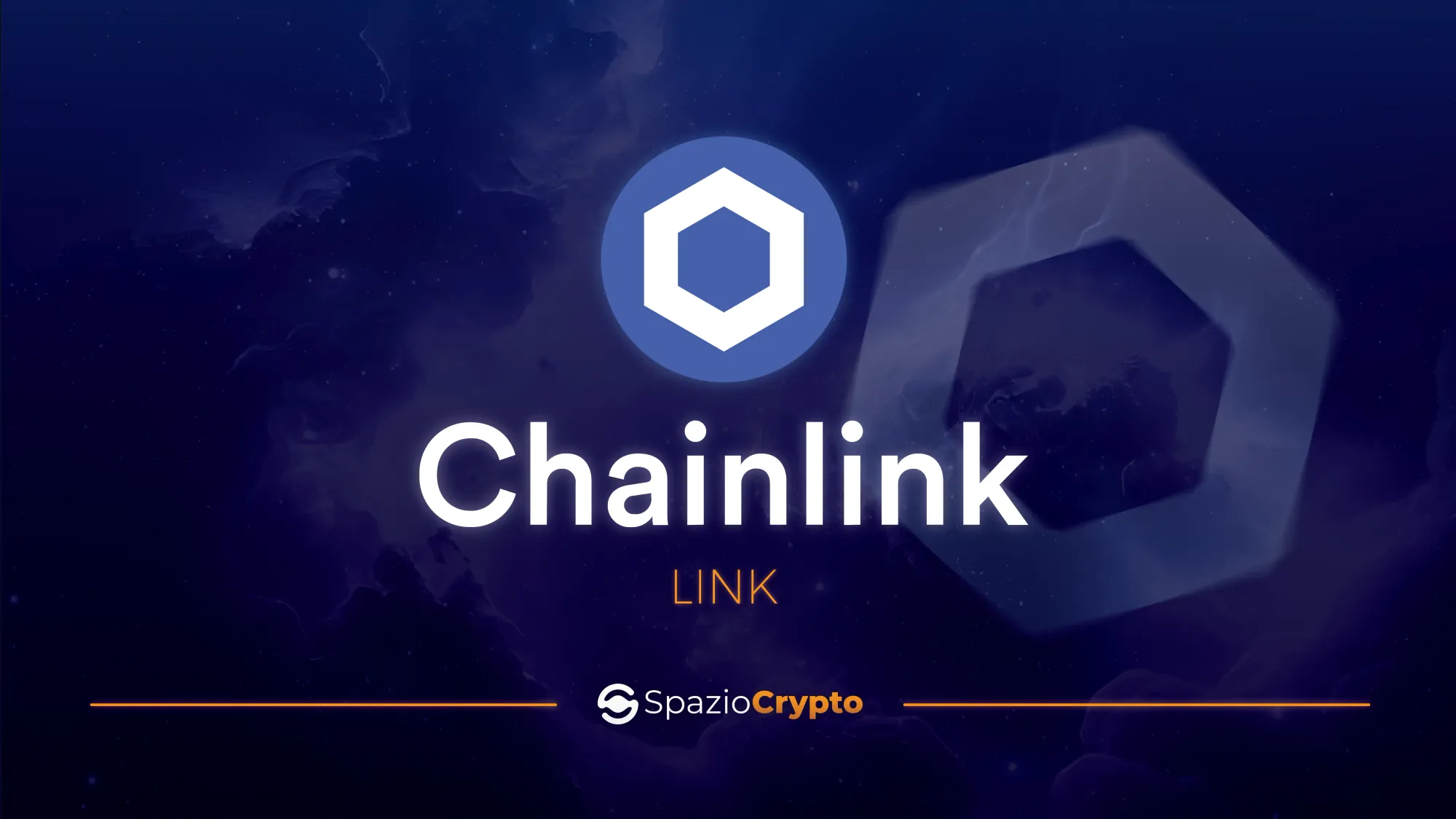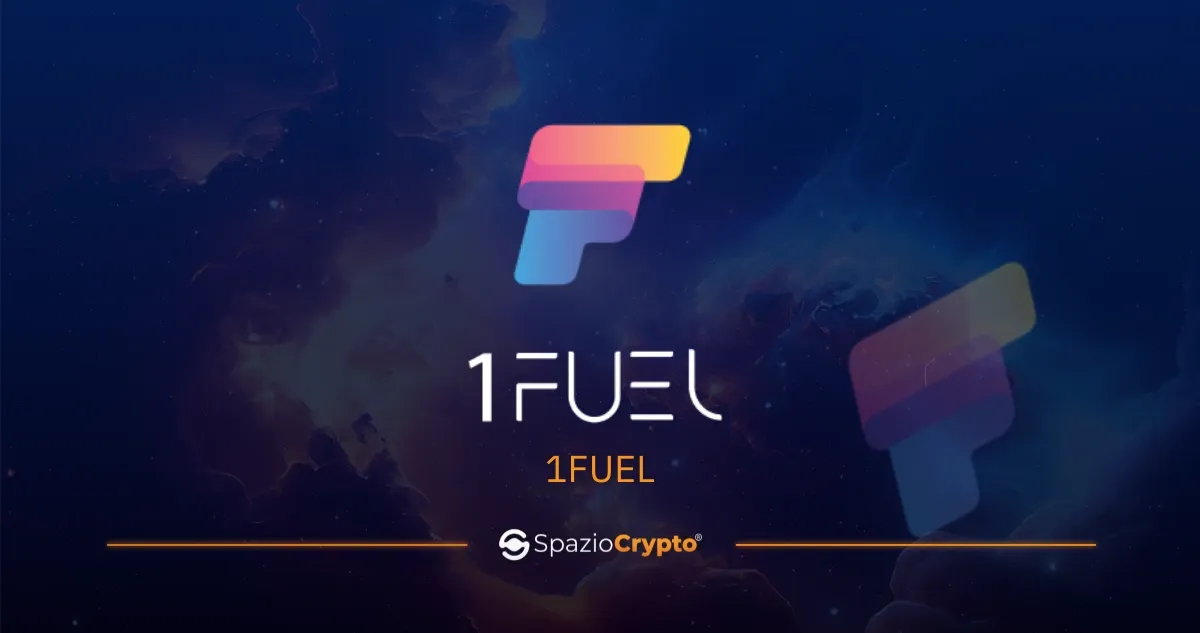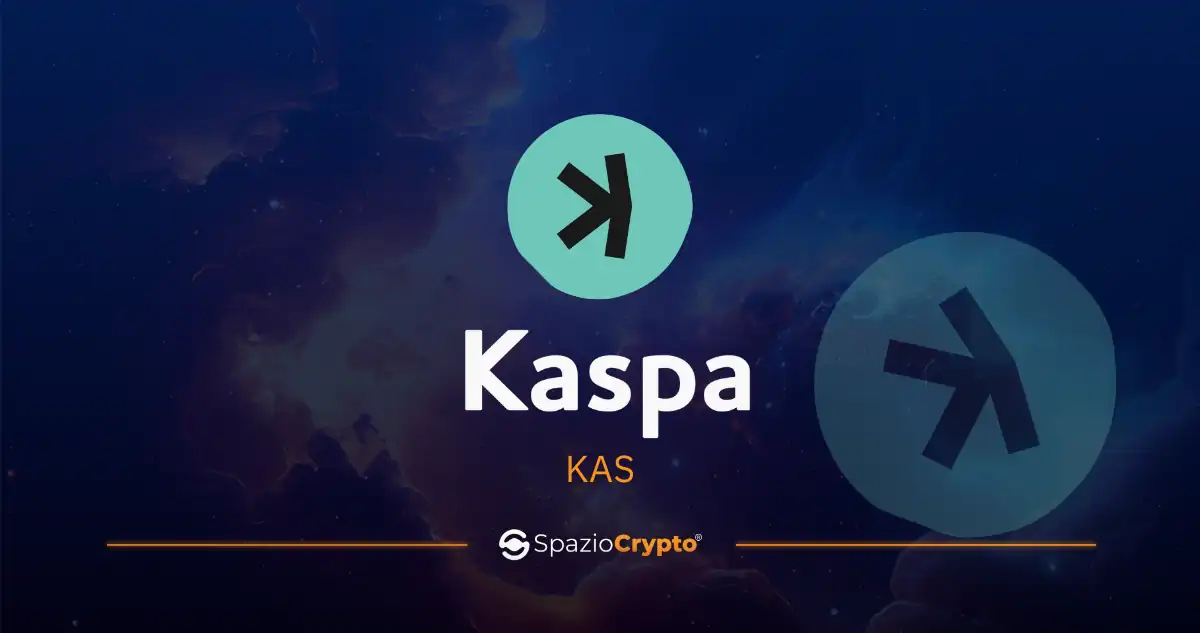Have you ever wondered how much space a library containing all the information on the Internet should occupy? It may sound incredible, but it should be as big as the state of Texas. The Internet has become our main source of information, relegating paper encyclopaedias to the role of nostalgic objects. And yes, you read that right, you didn't think blockchains referred to those old paper encyclopaedias, did you?
Blockchains are, in essence, data containers. However, unlike the digital libraries of the Internet, they are like digital islets isolated from the mainland of real-world data. They cannot independently search for information or access sources outside their code. So how can they find accurate data to make dApps and smart contracts work properly?
This is where Chainlink comes in, solving this dilemma by creating a robust and reliable bridge between blockchain and real-world data. In this detailed Crypto Guide by Spaziocrypto, we explore how Chainlink works, highlighting its importance and taking a closer look at its LINK token.
The Crucial Role of Oracles: An Introduction to Chainlink
As we said, blockchains are technologies that simply store data, usually transactions, and store this data in groups, which form blocks.
Second-generation blockchains, already starting with Ethereum, go a step further by supporting so-called smart contracts, i.e. agreements on the blockchain that are only executed if the agreements are fulfilled.
For example, we could sign a contract in which we agree to pay 1 ETH to the address 0x1a2b if Spaziocrypto does not reach the quota of 10,000 visitors by 2025. But we can write smart contracts that exchange coins and tokens reciprocally when a condition occurs, or even write insurance contracts in which we pay a premium to protect ourselves against a certain event, e.g. a fire in my house (Many were the insurances that protected against the depeg of the old MTS). So how can a smart contract know if my house is on fire or not? Well, that's what oracles are for.
An oracle is a trusted third party that provides reliable data from outside the blockchain. As mentioned at the beginning, the blockchain merely stores data, however we can write smart contracts that are based on data that the blockchain alone cannot access. We can request third-party information such as the price of a stock on the Milan stock exchange, the degrees centigrade in Zurich at a given time, or who won the US presidential election. The oracle acts as an informant, an intermediary between what is happening in the world and the blockchain. Obviously, these oracles are not tangible tools, but they too are formed from code.
As we know, blockchains tend to be decentralised. This allows us not to have to trust individuals or companies acting as intermediaries. With oracles, the same principle should be followed, using multiple sources in order not to have a single 'point of failure'. But how does one make a decentralised oracle? Chainlink to date represents the most widely used, decentralised and trusted oracle in the cryptocurrency market.
The Foundations of Chainlink: Architecture and Technology
Chainlink was born from the minds of Nazarov and Ellis, founders of the old smartcontract.com company and is a blockchain built on the Ethereum network and its operation is quite complicated. As we have anticipated, Chainlink replaces a number of intermediaries through code, let us now try to understand how the data provided by Chainlink arrive onchain. The key players in this operation are the 'node operators', i.e. individuals or companies that manage the nodes of this network of oracles, who decide to become a trusted source of information. Each oracle runs the basic Chainlink (client) software and thus operates independently of any other oracle. Of course, becoming a source of data is a profitable business as the person requesting the data obviously has to pay for it. In addition, some basic components are required, which include the Chainlink node client, the onchain 'oracle' contract, subscriptions to data sources and the adoption of systems to monitor the performance and reliability of Chainlink nodes.
These nodes are also present on marketplaces (e.g. on market.link) where they list their oracle services, certifications and all useful information. Those who want to develop smart contracts can therefore have a point of reference and use the Chainlink node platform to analyse the characteristics of each node and see if it is suitable for their needs. To start a Chainlink node there are no requirements, it can be done even by having 0 LINK. However, there are special requirements that require a deposit in LINK security.
Those wishing to obtain the data can in fact request a deposit in LINK as a security amount and penalty if the request is not fulfilled. In the case of malicious behaviour, in fact, a negative score can be received which will determine the reputation of that node.
Discovering the Technical Heart: How Chainlink Contracts Work
Technically, the matter gets more complicated. The network operates through a series of contracts that are automatically filled out by the Chainlink protocol.
Initially, Chainlink users define a "Service Level Agreement" contract (SLA) detailing specific requirements for the desired data. Subsequently, the software uses this SLA to associate the user with oracles that can provide this data through a sub-contract, the 'Reputation Contract'. This assesses the reputation of an oracle over time by taking into account the performance history and the authenticity and reliability of the answers. Nodes considered unreliable can then be discarded from Chainlink's network. So this contract verifies whether our source of information is trustworthy.
Having identified the trustworthy nodes, the Order Matching Contract sends the request to the nodes selected as trustworthy. From this list, it then chooses a set of nodes suitable to provide the answer the user is looking for. From a technical point of view, Chainlink converts the smart contract request that is in a specific programming language into another programming language so that it can access external data on the Internet.
The last stage involves the aggregation of the collected results from the oracles and their return to an "Aggregating contract". All this is facilitated by Off-Chain Reporting (OCR), a mechanism that allows all nodes to communicate in peer-to-peer mode.
All of this, of course, requires the user to pay for the service in LINK tokens, which will be locked in the contract they will enter into. This sum will be used to repay the oracles, of course if the information is of quality and in line with what has been agreed upon. As can be guessed, so far the token has not been of much use in the data request process. In fact, as soon as the data provider provides the data and obtains the reward in LINK locked in the contract, there is nothing to stop them from selling the reward on the market.
Use Cases most requested
Let's now look at some of the most requested features by users, which have made Chainlink a market giant.
Chainlink VRF (Verifiable Random Function)
Chainlink VRF (Verifiable Random Function) is a functionality that allows random numbers to be generated securely for smart contracts. The dilemma of generating 'truly' random numbers in computing is a long-standing issue, and obtaining tamper-proof values on a blockchain is a complex challenge. Chainlink's VRF function addresses this issue by enabling the generation of random values, accompanied by a cryptographic proof that these values were calculated correctly. The use cases and applications are many, it is possible thanks to VRF:
- Developing games based on lotteries and NFTs
- Assigning tasks or resources randomly
- Choosing validator nodes randomly
Chainlink Keepers
Chainlink Keepers is an automated solution proposed by Chainlink to simplify and decentralise smart contract automations. By solving the limitation of smart contracts to activate automatically, Chainlink Keepers enable more efficient management of smart contract functions, eliminating the need for frequent manual intervention by developers. This helps to mitigate the risk of vulnerabilities in decentralised applications and overall improve the reliability and efficiency of blockchain-related automations. Chainlink offers a number of possibilities for automation in different use cases. Here are a few common examples:
- Market Forecasts: PancakeSwap leverages Chainlink's automations to make market forecasts every 5 minutes on its platform.
- Decentralised Exchanges (DEX): Orders on DEX can be automated, allowing for automatic liquidation of positions based on specific conditions or the management of automated trading strategies.
- Yield Optimisers: Applications such as Alpaca Finance use Chainlink's services to automate functions such as liquidity management, token release and reward management.
- Money Markets: Chainlink's services are used to verify when to liquidate loan positions in money markets platforms.
- NFTs (Non-Fungible Tokens): Some DApps use Chainlink's Keepers to automate the generation of NFTs, simplifying the process.
- Games on Blockchain: Functions such as starting games or managing rewards and prizes can be automated in games on blockchain through the use of Chainlink Keepers.
- Stablecoin: Some stablecoin applications leverage Chainlink automations for features such as automatic rebalancing or token unlocking, improving the overall efficiency of the system.
Chainlink 2.0: Future Perspectives and Innovations
Chainlink is continuing to evolve and has outlined its vision through the whitepaper "Chainlink 2.0: Next Steps in the Evolution of Decentralised Oracle Networks".
New features coming soon include native staking and a decentralised meta layer designed to empower smart contracts through more scalable and faster forms of off-chain computing. Staking not only aims to ensure the correct behaviour of oracles in the network, but also introduces an incentive mechanism based on the LINK token, punishing malicious nodes. In particular, super-linear staking will be introduced, requiring more resources from malicious nodes in a quadratic ratio to the deposits of all nodes in the network.
As Chainlink expands, its attractiveness to users could grow through new services, lower costs and increased network utility. In this context, staking could play a significant role in fostering greater adoption of the network. Crucial will be the development of the cross-chain interoperability protocol (CCIP), which represents a major breakthrough for the development of blockchain. With Chainlink CCIP (Cross-Chain Interoperability Protocol), developers are finally able to create decentralised applications that can communicate and exchange value between different blockchains in a secure and reliable manner.
The use of Chainlink's well-established network of decentralised oracles ensures the security of cross-chain transactions. Chainlink's oracles provide cryptographic data, acting as proof of successful transactions on other chains. This additional layer of security, along with features such as transfer limits, makes CCIP an extremely reliable cross-chain solution.
With CCIP, developers can focus on creating innovative applications without worrying about the complexity of specific blockchain integrations. The intuitive interface allows them to transfer tokens, send messages and coordinate smart contracts on different chains. The application possibilities are virtually unlimited. For example, CCIP can be used to create cross-chain video games in which players on different blockchains compete, to register decentralised usernames interoperable across multiple chains, or to enable cross-chain lending in DeFi.
Chainlink designed CCIP to be extensible and future-proof, allowing the protocol to continually evolve to support new blockchains, improve security features, and expand use cases. With the widespread adoption of CCIP, the entire cryptocurrency industry takes a significant step towards the universal interconnectivity required for mainstream adoption.
LINK Token: Chainlink's New Dynamics of Tokenomics
Chainlink has proven since as far back as 2017 that it is an absolutely relevant and reliable protocol. However, its token is not properly optimised. We have seen how it is not necessary to block LINK in order to become node operetors and how it is only a tool of exchange between users and data providers.
Undoubtedly, there have been and will be many efforts to make LINK a token both attractive to potential investors and more useful to the ecosystem, making it more secure and incentivised. All this is still in a long exploration and design phase, in fact it is in these early days of January 2024 that the first 'chosen few' were able to test the staking of LINK. This will be a test phase, which, once passed, will open the doors of staking to all token holders. Linear staking will implement the slashing of LINKs for validators that provide incorrect information, for this initial phase the foundation has focused on ensuring the correction of the price data of ETH against USD. In the future, each datum provided will be subject to a potential slashing, which is assumed to be around 700 links per erroneous datum. In addition, there will be additional rewards for those who report the erroneous data. The old tokenomics will undergo major changes, there will be no cap on the supply, which will undergo an inflation of about 4%, resulting from 4 categories of rewards:
- Attributed Rewards: The total amount of LINK rewards awarded to a stakeholder, either claimable (claimable) or locked (locked), which can be fully claimed if the ramp-up period is fully completed.
- Claimable Rewards: The amount of LINK rewards that can be claimed immediately at a given time. Claimable Rewards are a percentage of the allocated rewards proportional to the percentage of completion of the ramp-up period.
- Locked Rewards: The amount of LINK rewards that are not yet claimable. Locked Rewards are a percentage of the awarded rewards that is inversely proportional to the percentage completion of the ramp-up period.
- Forfeited Rewards: When the staked LINK is withdrawn before the ramp-up period is fully completed, the locked rewards will no longer be claimable, being returned to the rewards pool.
Conclusions and Perspectives: Chainlink and the Future Challenges
Despite the length of this article, it cannot be exhaustive. There are many updates being implemented, and feedback from the community will be crucial for any future optimisations. The complexity of the protocol requires an in-depth technical study, facilitated by the outstanding documentation provided by the foundation. We recommend exploring Chainlink's YouTube channel and the official site, rich in valuable information. Spaziocrypto will be constantly updated on protocol developments to provide timely information to our readers. In the meantime, it is worthwhile further researching one of the few projects with a fundamental, almost monopoly use case.








